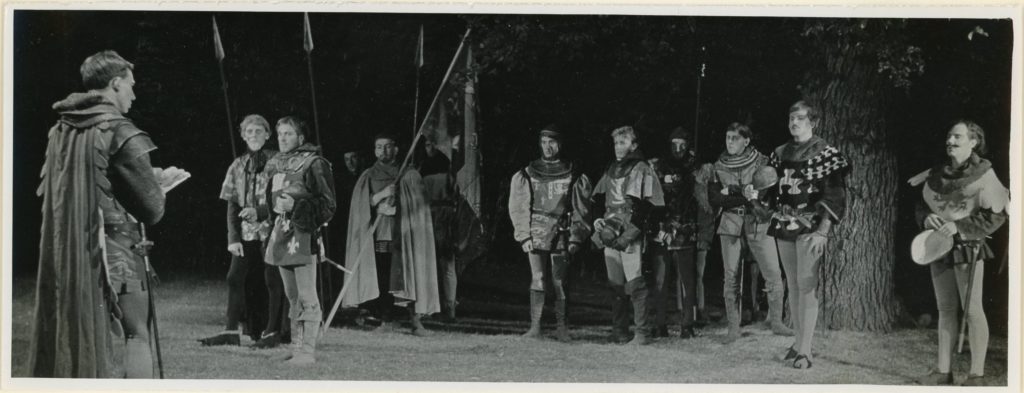
There is nothing so tantalising (but equally so frustrating) as receiving an interesting item into an archive for which there is little or no identifying information.
Just such an item recently arrived in the Magdalen Archives from among the papers of the late Anthony Smith (1938–2021), who was President between 1988 and 2005. A lifelong bachelor, and with no immediate surviving family, the task of sorting Anthony’s personal papers after his death fell to various individuals, among them Professor John Nightingale (Tutorial Fellow in Medieval History), who had known the former President well.
It was he who, in early June, handed me a small box of material retrieved from Anthony’s home in London (a place I would later visit myself in order to collect a much larger collection of personal photographs from his time as President) in which the abovementioned item was to be found. As is typical of things brought together in this manner, the box in question (now bearing the temporary reference number Acc2022/82) contained a small assortment of material, including some photographs, none of which came with any obvious identifying or contextualising information.
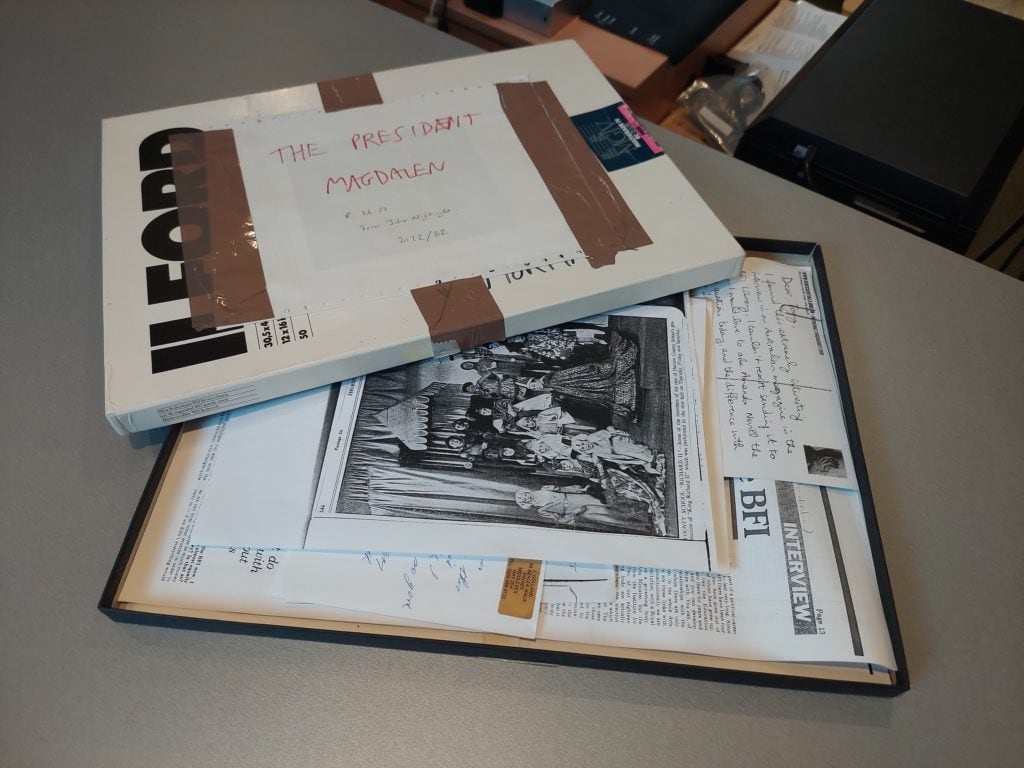
To anyone reading this who has tried their hand at family history, it will come as no surprise to learn that photographs can be a devilish form of archival object. Inherit a photograph without a legend or names written on the back, and you quickly have an archival record that has lost most of its value while also retaining a certain amount of mystique. (Who are these people staring out of the picture? When were they brought together, and why?)
Fortunately, some of the photographs in the aforementioned box were easy enough to identify without any accompanying information. So it was for a nice headshot portrait of Anthony Smith himself. Likewise, for a photograph showing our former President in conversation with Sir Isaiah Berlin (1909–1997), the celebrated social and political theorist, philosopher, and historian of ideas.
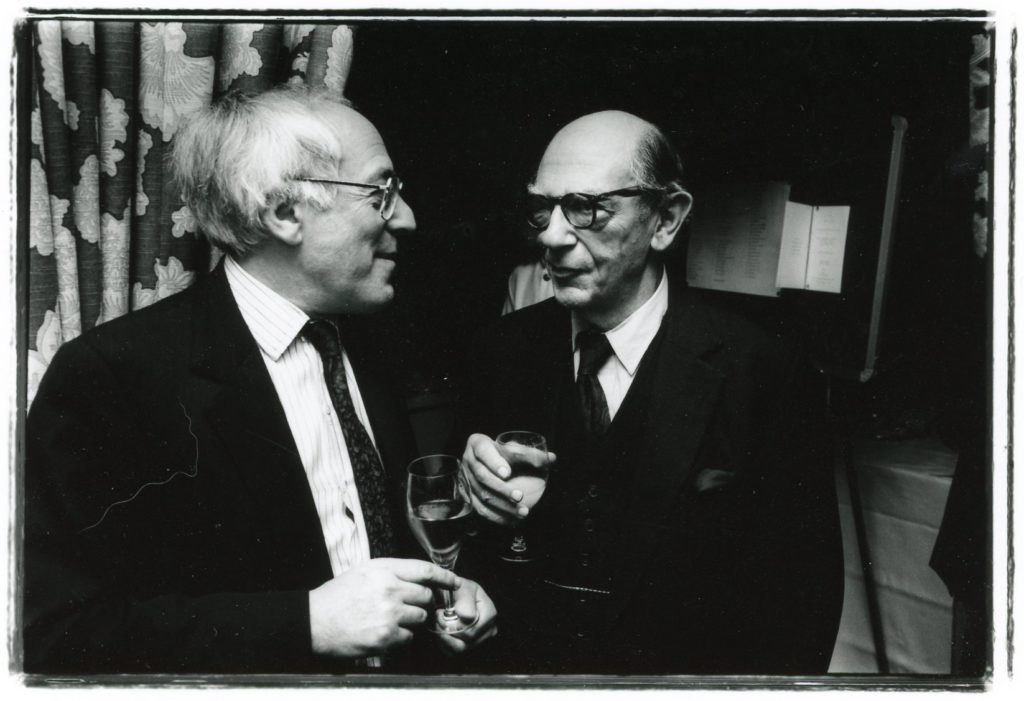
In this particular instance, I recognised Anthony Smith’s interlocutor by sight. Had I not done so, however, archivists around the world can now call upon the ‘Google Lens’ service, which allows users to upload pictures and search the internet for similar looking images. Despite having already identified the picture’s two subjects, I thought I’d nevertheless give this service a try, and, sure enough, Google’s AI algorithms generated photographs of a number of bespectacled, elderly men, with two of these images confirming what I already knew.
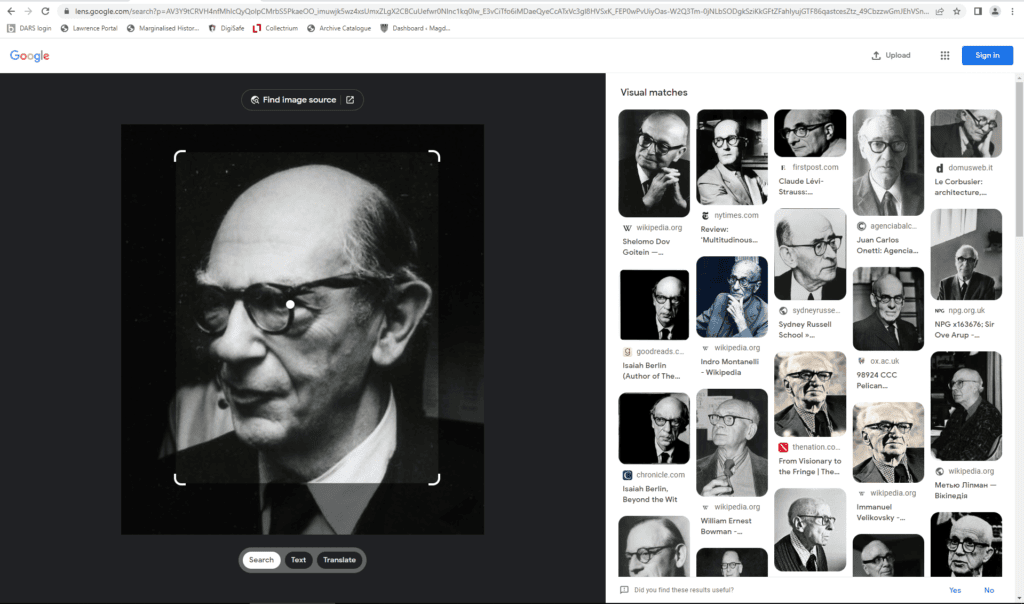
But what do archivists do when the subject of a photograph is not so well known as one of the 20th century’s most famous thinkers? I was faced with just such a dilemma with arguably the most intriguing of the items in the box. Embossed on the front ‘Photographs by Denys A Kempson, Oxford. Taken during the performance’, it was a small album of prints, seemingly of a Shakespeare play, which looked like it had been staged in the 1950s in The Grove at Magdalen. But much of this was guesswork. Were any of these suppositions correct? And, if so, what play was being performed, who was it being performed by, and when was it staged?
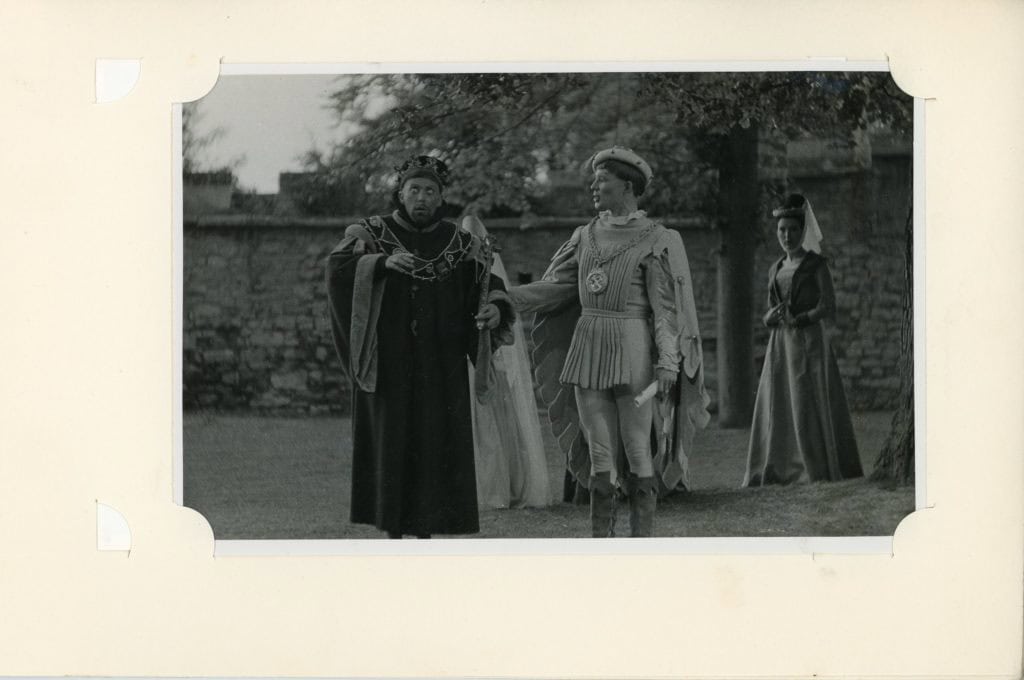
I was initially resigned to giving the album a most generic description (‘Photo album, containing six b/w photographs, seemingly of a Shakespeare play performed in The Grove, ? c 1950s. Photo credit: Denys A Kempson’), but was frustrated at not being able to say more. After all, the images showed what looked like a lavish production, complete with a roaring fire, featuring a large cast of both male and female performers. Researchers would almost certainly be interested in the album, but would be less likely to discover it if not described any more precisely.
Faced with such an impasse, I decided to chance my arm via Twitter. As social media platforms go, this one can sometimes have a bad rep. But, alongside the vitriol and unpleasantness is a truly global audience, large parts of which are brought together by existing connections and a love of a particular subject. Medievalists (of which I am one) routinely ask each other questions via Twitter (#medievaltwitter), typically with regards to a thorny palaeographical problem or a difficult-to-access publication, and archivists do much the same. A Friday afternoon tweet, complete with some pictures, was therefore duly composed and sent.
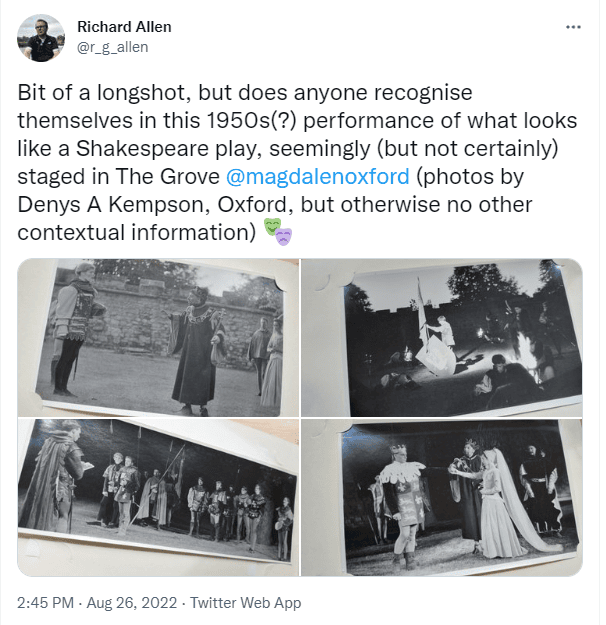
I left work a few hours later not particularly hopeful that much would come of this. After all, imagining someone might recognise something from as long as seventy years ago was something of a longshot. No sooner had I met up with friends on the river, however, than the phone in my pocket began to vibrate. At first, I thought it was a call. But, on unlocking the screen, I saw a flurry of Twitter notifications.
Rather than the usual likes and retweets, the notifications were for a series of comments in relation to the post. These had come from William Vaughan, a colleague at UCL Special Collections, whom I have never met, who had performed an altruistic and heroic bit of research, identifying not only the play but also a number of the players.
The play itself turned out to be Shakespeare’s ‘Henry V’, which was staged by the Oxford University Dramatic Society (OUDS) in The Grove during Trinity term 1957, and featured the Magdalen students Patrick Hobson (C 1956–57), Anthony Gibbs (RS 1956–59), and Peter France (D 1955–58), along with such OUDS luminaries as Patrick Garland (Teddy Hall) and Vernon Dobtcheff (Christ Church). Such was the lavishness of the performance that it attracted regional press coverage, with a reporter from the Birmingham Daily Post noting that ‘we have just seen the Battle of Agincourt fought on the turf of Magdalen Grove.’ What is more, the producer, Peter Dews (Univ), later adapted the performance for the BBC.

As for how the album came into Anthony Smith’s possession, his own connections to the world of film and television, not to mention his time as Magdalen’s President, seemed explanation enough. But, a copy of the programme, received by the Archives in the late 90s, shows his name among the players, where, as a student of Brasenose, he is listed in the role of Charles VI, king of France. I may have eventually put two-and-two together with regards to this archive item and the album in question, but then just as likely may not.
As such, I am left only to marvel at the generosity of one of my colleagues, and at the extraordinary world of social media, of which Shakespeare would doubtless have made much, no doubt observing that all’s truly well that ends well.
Written by Dr Richard Allen, College Archivist, Magdalen College.